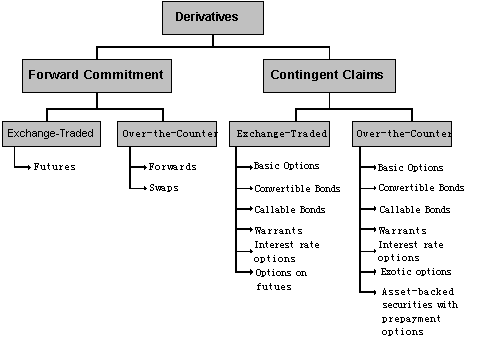- CFA Exams
- 2026 Level I
- Topic 7. Derivatives
- Learning Module 1. Derivative Instrument and Derivative Market Features
- Subject 1. Derivative Features and Underlyings
Seeing is believing!
Before you order, simply sign up for a free user account and in seconds you'll be experiencing the best in CFA exam preparation.
Subject 1. Derivative Features and Underlyings PDF Download
A derivative is a financial instrument that offers a return based on the return of some other underlying asset. In this sense, its return is derived from another instrument. These underlying assets can be equities (stocks), fixed income instruments (bonds), currencies, or commodities traded in cash or spot markets at cash or spot prices.
Derivatives usually transform the performance of the underlying asset. They are similar to insurance in that they allow for the transfer of risk from one party to another. The risk itself does not change, but the party bearing the risk does. The underlying asset is the source of the risk, referred to as the underlying - which does not always have to be an asset. The underlying could also include interest rates, credit, energy, weather, etc.
Derivatives are created in the form of legal contracts involving two parties, the buyer and the seller. The seller is sometimes known as the writer or the short party in the contract. The buyer, who purchases the derivative, is referred to as the long or the holder. The derivative contract always defines the rights and obligations of each party, and a legal system recognizes these.
There are two classes of derivatives - forward commitments and contingent claims. Forward commitments force the two parties to transact in the future at a previously agreed-on price. A contingent claim provides the right but not the obligation to buy or sell the underlying at a pre-determined price.

Benefits of Derivatives
Derivatives can be used to implement strategies that cannot be achieved with their underlying's alone. Derivatives have as an inherent feature a high degree of leverage. This means that investors typically only commit small amounts of money to a derivative position relative to the equivalent position in the underlying asset. Small movements in the underlying can lead to large movements in the derivative - both positive and negative. This has the effect of attracting lots of speculators in the derivative market looking for large gains. Furthermore, derivatives generally trade at low transaction costs in liquid markets.
There are numerous applications in risk management practice where the use of derivatives provides a useful tool for managing exposure to particular risks. For example, many financial institutions act as hedgers, meaning they use derivatives to reduce or eliminate certain forms of risk.
In addition, arbitrageurs use the derivative market to simultaneously buy and sell similar assets in different markets, creating a riskless profit while at the same time improving market efficiency.
User Contributed Comments 6
| User | Comment |
|---|---|
| BunnyBaby | What is the difference between Forward Committment and Contingent Claims? As you break down the different methods of purchase why are some options available only through exchange and some OTC? Did you notice that only Options on futures and Exotic options and Asset back securities are available via one method only? |
| Shalva | The specifics are explained in following LOS-notes |
| johntan1979 | Read on, Baby! |
| ldfrench | "Derivatives are financial weapons of mass destruction" - Warren Buffett in 2002. |
| ankurwa10 | think of it this way. Forward "commitment" leaves you with no choice but to honour it. whereas contingent claim are dependant on something happening, thereby leaving an element of choice. not scientific, but the reasoning helped me remember. |
| edrei7 | For forward commitments, a transaction must occur at a stated date settled at a stated price. For contingent claims, a transaction will only occur when the event where the contingency is based upon happens before an expiration date. |

I just wanted to share the good news that I passed CFA Level I!!! Thank you for your help - I think the online question bank helped cut the clutter and made a positive difference.

Edward Liu
My Own Flashcard
No flashcard found. Add a private flashcard for the subject.
Add